The evaluation and management of hirsutism*1
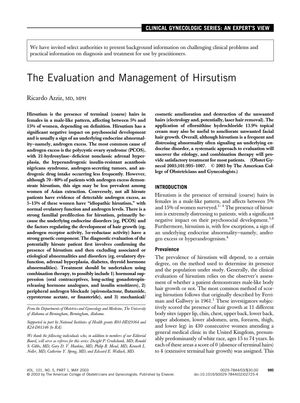
TLDR Most women with excess hair growth have an underlying hormonal issue, often treated with medication and hair removal methods.
Hirsutism, characterized by the growth of coarse hairs in a male-like pattern in women, affects 5-15% of the female population and is often indicative of an underlying endocrine disorder, such as androgen excess. The most prevalent cause of androgen excess is polycystic ovary syndrome (PCOS), but other causes include nonclassic adrenal hyperplasia, insulin-resistant syndromes, androgen-secreting tumors, and androgenic medications. While 70-80% of women with androgen excess exhibit hirsutism, it is less common in Asian women, and 5-15% of hirsute women have normal androgen levels, a condition known as "idiopathic hirsutism." Hirsutism frequently has a genetic basis due to the heritability of conditions like PCOS and the genes involved in hair growth regulation. Diagnosis involves confirming hirsutism and identifying any related disorders. Treatment typically involves a combination of hormonal suppression, androgen blockade, and mechanical or cosmetic hair removal methods, with eflornithine hydrochloride 13.9% cream as a possible topical treatment. A systematic diagnostic approach and combination therapy can effectively manage hirsutism in most patients.
View this study on sciencedirect.com →
Cited in this study
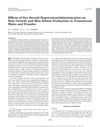
research Effects of Sex Steroid Deprivation/Administration on Hair Growth and Skin Sebum Production in Transsexual Males and Females
Hormone treatments in transsexual individuals reduce hair growth and oil production in male-to-females and increase them in female-to-males.
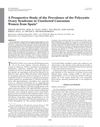
research A Prospective Study of the Prevalence of the Polycystic Ovary Syndrome in Unselected Caucasian Women from Spain1
Polycystic ovary syndrome is found in 6.5% of unselected Caucasian women in Spain.

research Comparison of Spironolactone, Flutamide, and Finasteride Efficacy in the Treatment of Hirsutism: A Randomized, Double Blind, Placebo-Controlled Trial1
Spironolactone most effective for hirsutism, but has side effects.
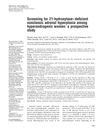
research Screening for 21-hydroxylase–deficient nonclassic adrenal hyperplasia among hyperandrogenic women: a prospective study
Testing basal 17-HP levels is a good way to screen for nonclassic adrenal hyperplasia in women with high androgen levels.
research Laser-assisted hair removal: Side effects of Q-switched Nd:YAG, long-pulsed ruby, and alexandrite lasers
Laser hair removal is safe with the right settings, but side effects like pain and skin changes are more common in darker or tanned skin.

research A Prospective Randomized Trial Comparing Low Dose Flutamide, Finasteride, Ketoconazole, and Cyproterone Acetate-Estrogen Regimens in the Treatment of Hirsutism
Cyproterone acetate-estrogen most effective for hirsutism, but consider side effects and patient needs.
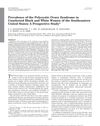
research Prevalence of the Polycystic Ovary Syndrome in Unselected Black and White Women of the Southeastern United States: A Prospective Study1
PCOS affects a similar percentage of Black and White women in the Southeastern United States.
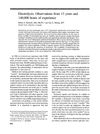
research Electrolysis: Observations from 13 years and 140,000 hours of experience
Electrolysis is effective for permanent hair removal, but technique is key to avoid scarring, and sometimes hormonal treatment is needed for women with hirsutism.

research A prospective randomized trial comparing finasteride to spironolactone in the treatment of hirsute women.
Finasteride and spironolactone both reduce hirsutism, but finasteride lowers androgen levels more.
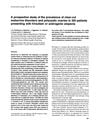
research A prospective study of the prevalence of clear-cut endocrine disorders and polycystic ovaries in 350 patients presenting with hirsutism or androgenic alopecia
Most women with hirsutism or androgenic alopecia had polycystic ovaries, especially if they had irregular periods.
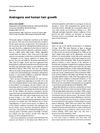
research Androgens and human hair growth
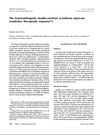
research The hyperandrogenic-insulin-resistant acanthosis nigricans syndrome: therapeutic response
Most patients improved with oral contraceptives, but some needed additional treatment.
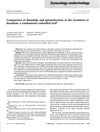
research Comparison of flutamide and spironolactone in the treatment of hirsutism: a randomized controlled trial
Flutamide is more effective and has fewer side effects than spironolactone for treating hirsutism.
research Comparison of Sequential Cyproterone Acetate/Estrogen Versus Spironolactone/Oral Contraceptive in the Treatment of Hirsutism
Both cyproterone acetate and spironolactone effectively reduce hair growth in women with hirsutism.
research The Treatment of Hyperandrogenism with Oral Contraceptives
Birth control pills are effective for treating women with too much male hormone.
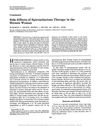
research Side-Effects of Spironolactone Therapy in the Hirsute Woman
Spironolactone can cause side effects like irregular bleeding, but lower doses may reduce these effects and still improve hirsutism.
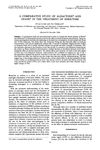
research A comparative study of Aldactone® and Diane® in the treatment of hirsutism
Aldactone was more effective in reducing hair growth in women with hirsutism than Diane, despite having less impact on hormone levels.
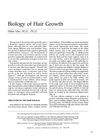
research Biology of Hair Growth
Testosterone and dihydrotestosterone affect hair growth, and new techniques like the folliculogram help study it, but fully understanding hair growth is still complex.
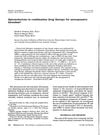
research Spironolactone in combination drug therapy for unresponsive hirsutism
Combination drug therapy is effective for hirsutism that doesn't improve with just one medication.
research The effects of two doses of spironolactone on serum androgens and anagen hair in hirsute women
Spironolactone reduced hair thickness and some testosterone levels in women with excessive hair growth.
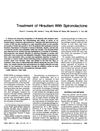
research Treatment of Hirsutism With Spironolactone
Spironolactone is a safe and effective treatment for reducing excessive hair growth in women.
Related

research The evaluation and management of hirsutism*1
Most women with excess hair growth have an underlying hormonal issue, often treated with medication and hair removal methods.